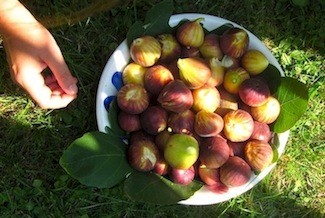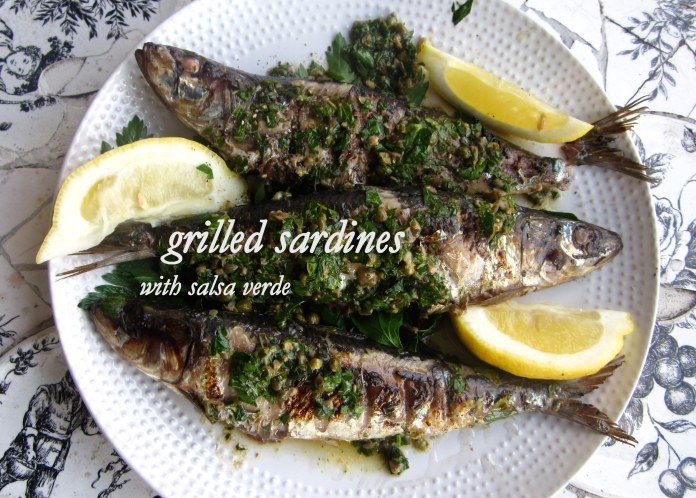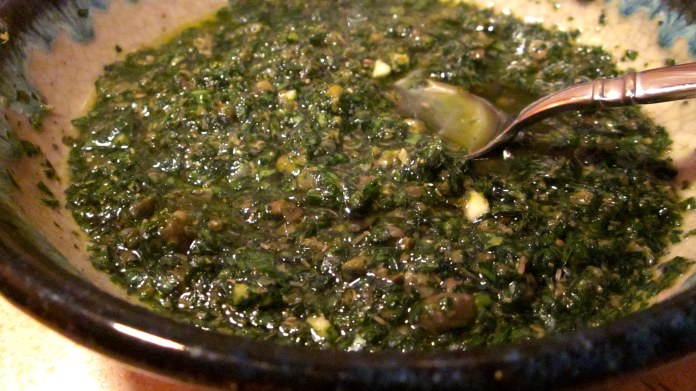Flowers speak. Red roses, desire; daises, innocence; hydrangeas, gratitude—there’s a whole language of blooms, one that came in handy in Victorian times, when “talking bouquets” could say the unsayable. But with the plants we eat, we tend to listen more to the hanging fruits and sprouting veggies than the flowers. Zucchini blossoms are here to change that, together with a nonna named Delia.

Zucchini flowers are just as edible as their fruits. The blossom tastes (surprise) like a bite of squash condensed in its thin orange membrane—faintly sweet, sort of grassy. For being so delicate, they pack a punch of flavor and color on a plate.
Italian cooking has long embraced the flower’s versatility: it can be added to frittatas and risotto, put on pizza, stuffed and deep-fried, batter-fried on its own, even tossed raw in salads. Different regions have preferred methods, but all share a common frugality—that Italian virtue of letting nothing go to waste, of making scraps sublime.

Nonna Delia with Tina, her favorite chicken (“Tina La Gallina”)
My introduction to zucchini flowers was through Nonna Delia, my aunt Monica’s grandmother who lived in the Piedmont region of Italy. She was a living archive of kitchen and garden wisdom, “a nonna with a capital N,” as my aunt says. One of her signature dishes was stuffed zucchini flowers, which she prepared in a way I have yet to see anywhere else beyond her kitchen. Instead of stuffing the flowers lengthwise, she filled them three-fourths of the way, then folded over the ends of the petals to form a compact little bell with a flat base. This method allows all the sides of the blossom to brown evenly while cooking, without the stuffing spilling out. Her filling didn’t have any rich cheeses, but was more of a trick to stretch whatever meat was on hand using simple ingredients like milk and stale bread—a carryover from harder times, which she transformed into a kind of luxury.


Nonna Delia’s blossoms hit all the right notes: they’re satisfyingly salty from the ham and pan-fried oil, but still light and zippy with the flecks of fresh parsley; to round it out there’s the quirky reminder of squash that comes from the flower. To me, beyond taste, they say happiness in being resourceful.
Nonna Delia died in August 2009, in the last weeks of zucchini season. I worked with my aunt to write out her recipe for stuffed flowers, with estimates for American measurements. In this quick moment before summer’s petals shut, here’s the recipe:
Nonna Delia’s Zucchini Flowers
Fiori di zucca della Nonna Delia

A note on the flowers:
When you add zucchini flowers to a dish or fry them whole, you don’t have to worry about finding wide-open blossoms. But when you stuff them, that becomes key—so it’s best if you can pick the flowers yourself. Get to the garden early in the morning, when the first sunrays sweet-talk the petals open. You can cut the female flowers that grow directly off of the zucchini, as well as the male flowers that have their own stem (these tend to be more plentiful, and the stem is helpful when stuffing). Catch them later on and they’ll be stubbornly shut (pulling the petals apart is a disaster).
Back in the kitchen, rinse the flowers and rest them facedown on a towel. (Here, I’m always reminded of the dance of the flowers scene in Fantasia—admiring the elegance of these grand dames on their dance floor, it’s easy to forget that this recipe was born from pinching pennies.) Right before filling, carefully remove the pistil from the middle of the flower, without tearing the petals. I usually have the most luck here by slightly twisting the pistil out with my thumb and forefinger.

Filling ingredients (for about 20 flowers):
- Day (or so)-old bread (about ¾ of a large loaf)
- Milk (2 to 3 cups, depending on how tough the bread is)
- Fresh parsley (about a half a bunch)
- 2 egg yolks (ideally, Tina’s)
- Prosciutto cotto (about 1/3 lb)
Note: Prosciutto cotto is the Italian version of basic ham. (We’re used to seeing more of prosciutto crudo, which is cured, as an Italian import. “Crudo” = uncooked, “cotto” = cooked.) Prosciutto cotto is light but packed with flavor, so a few slices go a long way. You can find it in the deli sections of European-leaning grocery stores (Gran Biscotto is a good imported brand that I’ve come across). Ask the meat cutter to cut a thick slice rather than individual paper-thin slices; that will make it easier to dice. If you can’t track down any prosciutto cotto, you can substitute any leftover meat you might have on hand.
- Freshly grated parmigiano cheese (about ¼ cup)
- Breadcrumbs (if necessary, about ¼ cup)
- Salt and pepper
- Olive oil


- Remove the crust from the bread and discard. Break the bread into big chunks and transfer it to a bowl (this will make it easier to drain later on). Pour the milk over the bread, making sure that all of the bread is covered. Let the bread soak for at least 5 minutes (you can start chopping other ingredients in the meantime). Once softened, gently squeeze the bread to drain excess milk.
- Finely dice the prosciutto and chop the parsley.
- In a large bowl, mix the bread with the prosciutto, parsley, and salt and pepper, to taste. Add two lightly beaten egg yolks and the parmigiano cheese. The filling should be soft but not runny; if it’s too liquid, you can stir in some breadcrumbs to thicken.
- Carefully remove the pistils from the zucchini blossoms. Using your hands, fill the flowers so the filling rises above the point where the petals begin to break off from the base. Fold each petal flat over the filling to seal the flower, creating a bell shape with a flat base. Place facedown on a plate.
- When all the flowers are stuffed, heat a few tablespoons of olive oil in a skillet. Once the oil is hot, place the stuffed blossoms facedown in the skillet. Cook for about a minute, then rotate on each side for an additional minute or so, just until the flower is lightly browned all over.
- Remove from skillet and set on a plate lined with paper towel blot the oil. Serve when still warm.


Since you can’t predict the number and size of blossoms you’ll find in the garden (or market), you might have leftover filling. It’s Piemontese tradition to use any leftovers to make friciulin—little fritters made by pan-frying balls of filling in an oiled skillet. Truly, nothing goes to waste!





















































